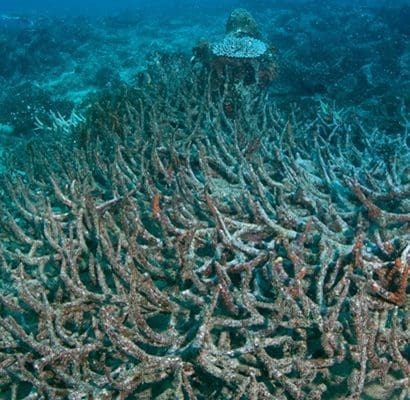The world’s oceans are not just vast bodies of water; they are also remarkable canvases of color. Have you ever wondered why some seas appear deep blue, while others take on hues of green, brown, or even red? This article aims to unravel the mysteries of ocean colors, making it easy for everyone to understand. We’ll explore what causes these breathtaking color phenomena, how they change, and why they matter. So, let’s dive in and embark on a colorful journey through our oceans!
Contents
The Canvas of Water: Why Do Oceans Have Colors?🐟
When you gaze out at the ocean, you might notice that it’s not always the same color. Sometimes, it’s a deep blue, like a giant swimming pool, while other times, it might look a bit green, brown, or even a mysterious red. So, why do the oceans have different colors, and what makes them so mesmerizing? Let’s dive into this colorful adventure together, and I’ll explain it all in a way even a 12-year-old can understand.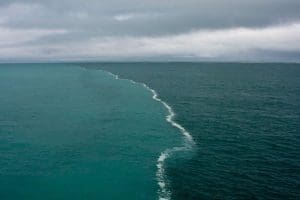
Why Oceans Have Color: A Splash of Science
Oceans are like a canvas painted by nature. They get their colors from various things that float in the water. One of the main reasons is tiny creatures called phytoplankton. These are like microscopic plants, and they come in many colors. When they gather together, they can make the water look green or even a bit brownish.
Another reason for ocean colors is the stuff that’s at the bottom of the sea, like sand and mud. When the water stirs up this stuff, it can turn the ocean water a bit murky. Think of it like stirring your hot cocoa; it gets a bit cloudy.
The Magical Mix of Nature’s Paints: Influencing Colors
But there’s more to it. The colors can change because of where you are. In some places, like the Arctic, the water can look almost crystal clear, which makes it seem blue. In other spots, like near the coasts, rivers can bring in dirt and mud, which can make the water look brown. And in special moments, when the ocean is full of phytoplankton, you might even see it turn green.
Imagine you have a set of crayons, and you start mixing them together. That’s kind of what happens in the ocean. The mix of sediments, phytoplankton, and even other things like nutrients all join in to create the beautiful colors we see.
The Sun’s Paintbrush: How Sunlight Makes It Happen
Now, let’s talk about how the sun plays its part. When the sun is high in the sky, it shines straight into the water. It makes the ocean look more blue because it’s so good at lighting up the blue colors in the water.
But when the sun is lower, especially during a sunrise or sunset, it has to go through more of the air and water to reach our eyes. This can make the colors change. Sometimes the ocean might turn orange, pink, or even purple. It’s like a magical color show in the sky!
The Changing Colors of the Oceans: What Makes Them Shift?🐟
Hey there, young ocean explorer! Have you ever noticed that the ocean isn’t always the same color? It’s like a chameleon, changing its outfit depending on where it is, what time of year it is, and what the weather is like. Let’s dive into the world of shifting ocean colors, and I’ll explain it in a way that’s super easy to understand.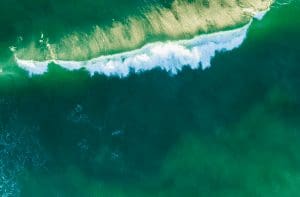
How Ocean Colors Change.
Imagine the ocean as a giant color-changing screen. Now, imagine you can change its colors just by changing a few things around it. That’s exactly what happens with our oceans. Three main factors play a big role in changing their colors.
- Location Matters: Think of the Earth as a big puzzle with lots of pieces. Depending on where you are on the planet, the ocean can look different. In warm and sunny places, like the Caribbean, it often looks bluer. But in colder spots, like the Arctic, it can appear almost clear, like a big sheet of glass.
- Seasons Have Their Say: Just like the seasons change your clothes, they also change the ocean’s color. In the summertime, the ocean might be sparkling blue because of the strong sunlight. But in the winter, when the sun is lower and the sky is often cloudy, it might seem a bit grayer.
- Weather’s Whims: Weather can be a big color mixer. On sunny days, the ocean can look its brightest blue. But when it’s rainy or cloudy, the sky’s reflection can make the water look gray or green. Sometimes, storms can stir things up, making the ocean look murkier.
Traveling the Rainbow: Ocean Colors Around the World
Now, let’s take a whirlwind trip around the globe to see how the ocean’s colors change in different places. It’s like looking at a giant map of colors!
- Caribbean Dream: In the Caribbean, the water often dazzles in shades of deep blue, thanks to the warm sun and clear skies. It’s like a giant swimming pool!
- The Arctic’s Crystal Clear: Up in the Arctic, the water is so cold that it’s almost like clear glass. You can see right through it to the icy depths below.
- Green, Green Galapagos: Over in the Galapagos Islands, you’ll find greenish waters. This is because the ocean is rich with nutrients that feed lots of marine life, making it appear green.
- Red Sea Mystery: In the Red Sea, things get really interesting. Sometimes, it turns a deep red or brown. This is because of tiny organisms that make the water look this way.
- Mystical Mediterranean: The Mediterranean Sea often has a bluish-green hue. It’s like an artist’s palette with a mix of colors.
Phytoplankton and the Enchanting Brilliance of Blue🐟
Welcome, young adventurers, to the world of ocean magic! Have you ever wondered why some parts of the sea sparkle in the most brilliant shade of blue? Well, it’s all thanks to some tiny, yet powerful, ocean superheroes called phytoplankton. Let’s dive in and uncover their secrets in a way that even a 12-year-old can grasp.
The Blue Wonder: How Phytoplankton Paint the Ocean
Picture the ocean as a canvas, and the artists behind this enchanting blue masterpiece are the phytoplankton. Among these tiny creatures, one group called diatoms takes the spotlight. Diatoms are like little glass houses, and when they gather together in the sunlight, they create a shimmering blue effect.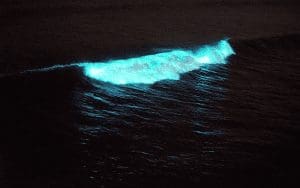
Diatoms have this superpower to reflect the blue part of sunlight while absorbing the other colors. So, when the sun’s rays kiss the water, diatoms work like mirrors, bouncing back the blue color for us to see. It’s like a cosmic paintbrush at work, and the result is the stunning blue hue of some oceans.
Jewels of the Sea: Famous Places Bathed in Blue
Now, let’s embark on a virtual tour to some of the most famous blue wonderlands on our planet. These places owe their brilliant blue shades to the incredible diatoms and other phytoplankton.
- Maldives: Turquoise Paradise: The Maldives is renowned for its stunning turquoise waters. Beneath the surface, diatoms and other phytoplankton create a vibrant underwater world that’s hard to resist.
- Great Barrier Reef: Blue Spectacle: Australia’s Great Barrier Reef is not just a hotspot for fish, but also for the sparkling blue waters. Diatoms and their fellow phytoplankton pals create a dazzling backdrop for the colorful marine life.
- Santorini, Greece: Aegean Gem: Santorini’s crystal-clear, azure waters are a result of the Mediterranean’s rich phytoplankton population. The island’s blue charm is hard to match.
- Gulf of Mexico: Sapphire Secrets: The Gulf of Mexico’s deep blue hue is partly due to phytoplankton, and it adds to the allure of its unique underwater ecosystem.
Eco-Warriors of the Sea: The Vital Role of Phytoplankton
Now, let’s talk about the important job these tiny but mighty phytoplankton do in our oceans. They are like the recycling heroes of the sea. They take in carbon dioxide, a greenhouse gas, and turn it into oxygen. This process not only helps keep our planet’s atmosphere in balance but also provides the oxygen that fish and other ocean creatures need to breathe. In a way, phytoplankton are the life support system of the oceans.
The Mystery of Red Seas and Other Unusual Colors in the Oceans🐟
Welcome back, young ocean enthusiasts! Now, let’s dive into the intriguing world of unusual ocean colors. Sometimes, the sea surprises us with shades we’d never expect, like mysterious reds, eerie greens, and murky browns. What’s the story behind these unconventional hues? Let’s set sail on an adventure to uncover the ocean’s colorful enigmas, all in a way that’s easy for a 12-year-old to grasp.
Cracking the Code: Red Tide Mysteries
Ever heard of a “red tide”? It’s not a tide that’s red, but it’s a pretty cool (and sometimes creepy) ocean phenomenon. Red tides are like parties for certain types of tiny algae called phytoplankton. When conditions are just right—warm water, lots of sunlight, and extra nutrients—the phytoplankton throw a wild party and reproduce like crazy.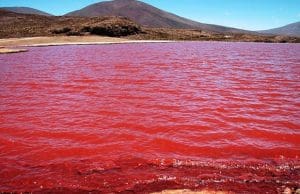
These algae release pigments that make the water look reddish, and sometimes they produce toxins that can be harmful to fish and other sea creatures. It’s like a real underwater mystery, but scientists are on the case to understand why these red tides happen and how they affect the ocean.
Beyond the Blues: Unusual Ocean Colors and Their Explanations
While blue oceans are common, nature often likes to surprise us with unique color twists. Here are a few other shades and their explanations: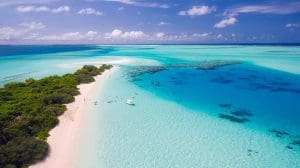
- Emerald Green Waters: Imagine swimming in waters that look like they belong in a fairy tale! Some places, like the Galapagos Islands, have emerald green seas due to an abundance of nutrients that phytoplankton thrive on. They turn the water into a magical green hue.
- Muddy Brown Surprises: Sometimes, after heavy rains or near coastal areas, the ocean may appear brown. This is often because rivers carry sediments and dirt into the sea, creating a temporary brownish tint. It’s like a muddy puddle on a grand scale.
- Glowing Blue-Green Gleam: Some oceans can shimmer with a blue-green glow at night, a phenomenon called bioluminescence. Tiny marine organisms, like fireflies of the sea, create this magical display. When disturbed, they emit a soft, beautiful light that lights up the water.
- Mysterious Black Waters: Deep in the ocean, where the sun’s rays can’t reach, the water can appear almost black. It’s like looking into the abyss, and it’s because very little light penetrates those depths.
- Golden Sunshine: In shallower coastal waters, sometimes the sun’s reflection can create a golden sheen on the surface. It’s like the ocean is wearing its own version of a golden crown.
And there you have it, young adventurers! The oceans are a playground of colors, each with its own tale to tell. From the enigmatic red tides to the mesmerizing emerald greens, the sea never ceases to amaze us with its ever-changing palette. If you’re as captivated by the ocean’s wonders as we are, you might want to explore our article on “Swimming to Success! Guide for the Fish Farming Business” for more underwater adventures!
The Impact of Climate Change on Ocean Colors🐟
Hello, young ocean detectives! It’s time to uncover the secrets of how climate change is altering the colors of our oceans. Just like a chameleon adapting to its surroundings, the ocean is changing its shades due to the changes happening on our planet. Let’s embark on a journey to understand this phenomenon in simple terms that even a 12-year-old can grasp.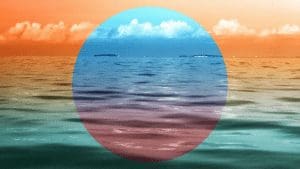
The Climate Change Connection: How It Affects Ocean Colors
You know how our Earth’s temperature is rising because of all the extra pollution we’re putting into the air? Well, this affects the ocean too. The warmer temperatures can lead to some big changes in the water and, as a result, its color.
When the planet heats up, it can make the ocean warmer too. This warmth can mess with the ocean’s balance. Some of the tiny ocean creatures we talked about earlier, like phytoplankton, may not like this warmer water. They might not party as much, and that can change the way the water looks.
What’s Happening Now and What the Future Holds
Okay, let’s talk about what’s happening right now. Some oceans are getting even bluer. You might think that’s a good thing, but not always. It’s because some phytoplankton might not survive in the warmer water, making the ocean clearer and bluer.
But, remember the red tides we discussed earlier? They might become more common as the water gets warmer. So, parts of the ocean might turn reddish more often, and that’s not so great for the fish and other creatures that call the ocean home.


